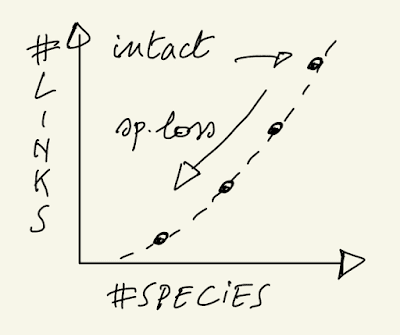Hybrid networks reveal contrasting effects of agricultural intensification on antagonistic and mutualistic motifs
Carlos Martínez‐Núñez, Pedro J. Rey, 2021
- Anthropogenic‐driven perturbations such as agricultural intensification can affect simultaneously and distinctly several species groups and ecosystem functions. Unveiling these concurrent effects on interdependent species groups connected by different types of ecological interactions is a key challenge for ecologists. To this endeavor, hybrid ecological networks arise as a promising tool.
- In this study, we used bee trap nests to sample hybrid networks that combined mutualistic and antagonistic interactions to explore agricultural intensification effects on the representation of network motifs (i.e., subnetworks showing different interaction types between a small number of species). Also, we assessed the variability of network motif’s frequencies on farms under similar management regimes and the dissimilarity between farms under different ones. For this, we implemented a novel approach, calculating network functional spaces based on probability density estimates of network motif’s frequencies, using network motifs as traits.
- Results showed that environmentally‐friendly practices maximize the representation of mutualistic (cavity nesting bees‐plants) and predation (wasps‐prey and bees/wasps‐antagonists) motifs. In contrast, intensive agriculture favored generalist and intraguild predation interactions. Lastly, the frequency of motifs representing antagonistic interactions was more inconsistent and unpredictable across sites than mutualistic motifs, especially on intensified farms.
- Our novel approach, dissecting hybrid networks into
their motifs and analyzing the functional space defined by these,
reported detailed and contrasting effects of agricultural
intensification on network motifs that represent the mutualistic and
antagonistic interactions in this system.
https://besjournals.onlinelibrary.wiley.com/doi/10.1111/1365-2435.13800
.















